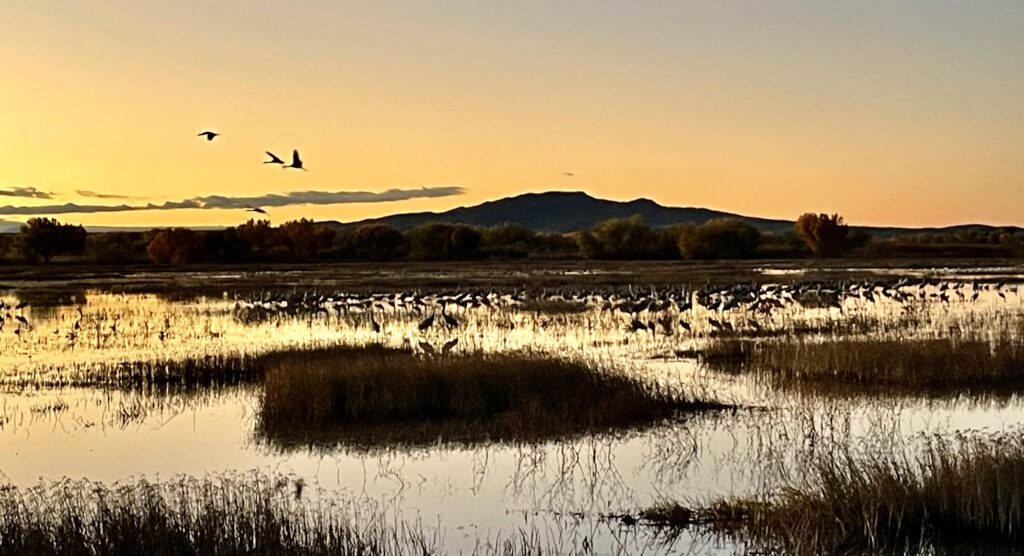This 57,000-acre National Wildlife Refuge was established in 1939 when it was noticed that few sandhill cranes were using this traditional winter flyway. The Refuge began making food available as a way to support the birds. This has evolved into multiple marsh ponds,15 miles of driving roads, hiking trails, a visitor center, and habitat for many birds, mammals, and insects. Because of its location along the Rio Grande, water can be directed through channels and used to grow marsh crops such as millet and bullrush and, in the grain fields, alfalfa, wheat, and clover. This system makes the area a rich source of food for wintering birds.

Bosque del Apache is best known for hosting the winter feeding grounds of the Sandhill Crane. In recent years, about 10,000 cranes have wintered here. Since they can fly up to 500 miles a day, it is no problem to come from their summer homes in Wyoming and Montana. They spend the night standing in shallow water or on patches of marsh, safe from predators, and fly out to forage first thing in the morning. There is fossil evidence that this unique bird has been around for the past nine million years, giving it the longest history of any other current bird species.
A festival to honor the crane is held annually; this year it will be from December 6–9. The Friends of the Bosque website is full of nformation on the available lectures, tours, and transportation. Beside the cranes, one may also see some of the 20,000 Ross’s and Snow Geese, eagles, 20+ species of ducks, mule deer, coyote, muskrat, javelina, and porcupine.
Bosque del Apache’s history is more than birds. The Piro Pueblo People once lived on this land. A Pueblo village was on land that is now known as the Little San Pascual, a 20-acre parcel adjacent to the Refuge that is one of three nearby federally-designated Wilderness. This Pueblo village once had 1,500 rooms, and it is thought that about 7,000 Piro People lived in the 60-mile stretch along the river in what is now Socorro County. With the arrival of the Spaniards, the Piro People were beset with new illnesses and skirmishes. By the time of the Pueblo Revolt of 1680, the Piro People were dead or scattered and never returned to the area.
There is no fee to visit the museum, but it costs $5.00 to drive through the Refuge and the Festival’s lectures and tours require a registration fee. The Bosque del Apache is a unique New Mexican experience, rich in history and habitats. Enjoy!

